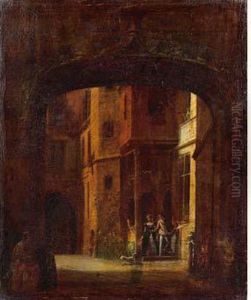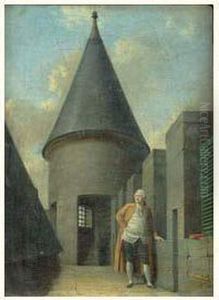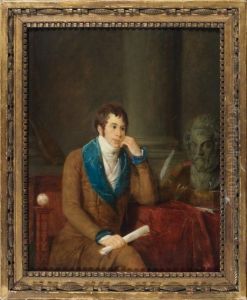Jean-Francois Garnerey Paintings
Jean-Francois Garnerey was a French painter and engraver born in 1755, whose contributions to the art world spanned several decades, primarily during the late 18th and early 19th centuries. His work is often associated with the transitional period between Rococo and Neoclassicism, reflecting the shifting tastes and political climates of his time. Garnerey was not just a product of his era but also a significant contributor to the stylistic developments that characterized French art during and after the Revolution.
Garnerey's early career was influenced by the Rococo style, with its emphasis on lightness, grace, and ornamentation. However, as the political and social landscape of France began to change, so too did Garnerey's art. The advent of Neoclassicism, with its focus on simplicity, symmetry, and references to the classical past, found a place in his work. This was a time when art was not just for decoration or pleasure but was also used as a vehicle for political expression and revolutionary ideals. Garnerey adeptly navigated these changing currents, adapting his style to suit the evolving tastes of his patrons and the broader public.
Notably, Garnerey was also involved in the world of engraving, a medium that allowed for the wide dissemination of his and others' works. Engravings played a crucial role in the period, serving as a means of spreading the revolutionary ideas and classical aesthetics that were central to the era's artistic movements. Through his engravings, Garnerey contributed to the popularization of Neoclassical themes, making them accessible to a broader audience beyond the elite patrons of the arts.
Throughout his life, Garnerey experienced the tumultuous events of the French Revolution, the rise and fall of Napoleon, and the Restoration of the Bourbon monarchy. These events undoubtedly influenced his art, both in terms of content and style. He lived until 1849, witnessing the early stages of the July Monarchy and the continued evolution of French art. Garnerey's legacy is that of a versatile artist who managed to adapt to the rapidly changing artistic and political landscapes of his time, leaving behind a body of work that reflects the complexities and transitions of his era.


